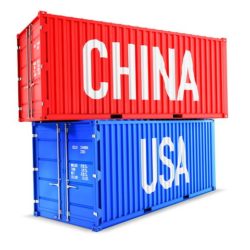73% of companies change supply chain to achieve greater resilience

As many as 73% of companies have added or removed manufacturing sites in their supply chain over the past two years. This is according to new research from Gartner. These changes are the result of the emphasis of chief supply chain officers (CSCOs) on building resilience, flexibility and agility in their supply chains. As a result, lowest-cost strategies take second place.
To see how CSCOs are currently approaching supply chain design and strategy, Gartner surveyed 437 respondents (senior managers and above) from companies with annual revenues of at least US$250 million in North America, Latin America, Europe and Asia/Pacific. This revealed that risk management considerations – such as improving resilience – have supplanted cost efficiency as the main driver of supply chain network changes.
‘Instead, they are focusing on diversified approaches to mitigate risk and improve performance,’ says Vicky Forman, Senior Director Analyst at Gartner. ‘While cost efficiency is still a prominent concern, when making network design changes CSCOs are looking more broadly at the costs associated with the impact of disruptions and poor resilience levels.’
Expanding the network for reglobalization
The most frequently mentioned supply chain change was adding new supply locations with existing supply partners, cited by half of the respondents, while 48% said they were pursuing new supply locations with new supply partners. Expanding the number of supply locations is a strategy that companies often employ for diversification, cost efficiency and to reduce geopolitical pressures, among other things.
Of the companies that had implemented supply chain changes in the past two years, 90% reported that the expected benefits were achieved or even exceeded. These included benefits such as improved service, cost reductions, more flexibility and lower carbon emissions. This success rate, according to Gartner, indicates that more changes are likely to come. Indeed, according to the analyst firm, supply chain leaders are pursuing a strategy of ‘reglobalization’ with a mix of nearshoring and low-cost diversification.
‘There has been a clear trend of adding network locations over the past two years. But apart from that, there is considerable variation in strategies depending on the size, sector and location of the company in question,’ comments Forman. ‘Successful companies have reconfigured their global supply chains to take advantage of new incentives while avoiding concentration risk.’
Challenges when working in new locations
Despite the success of these network shifts, 96% of respondents have experienced challenges when working in new locations. Operational and logistical costs were cited most often in this regard, but there were important regional differences. These included inadequate logistics infrastructure for new capacity in India, for example, as well as the shortage of factory workers in North America and the complexity of complying with local regulations in South Asia, Africa and Central and South America.
These regional differences, according to Gartner, underscore how important it is to make decisions about new locations based on several factors, not just the apparent cost efficiency. A shortage of factory workers or the complexity of complying with local regulations often creates additional costs if these issues are not thoroughly considered and addressed before decisions are made.











